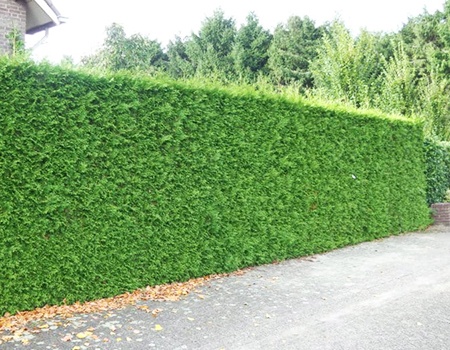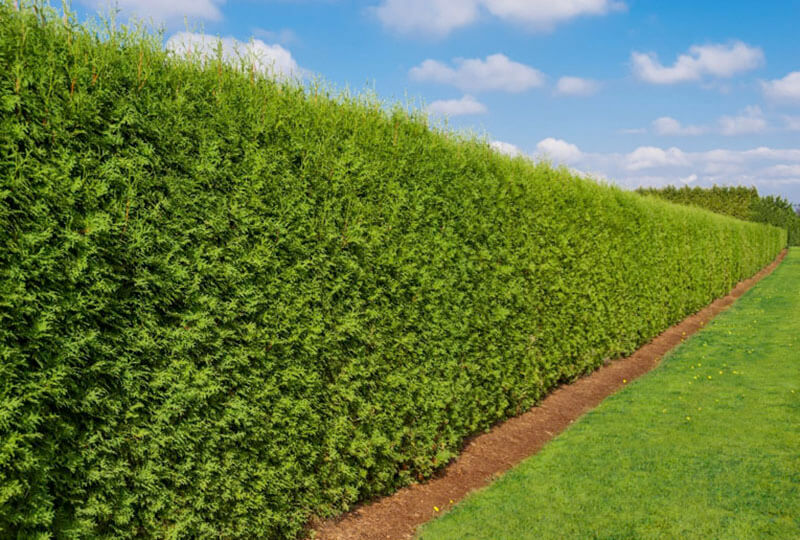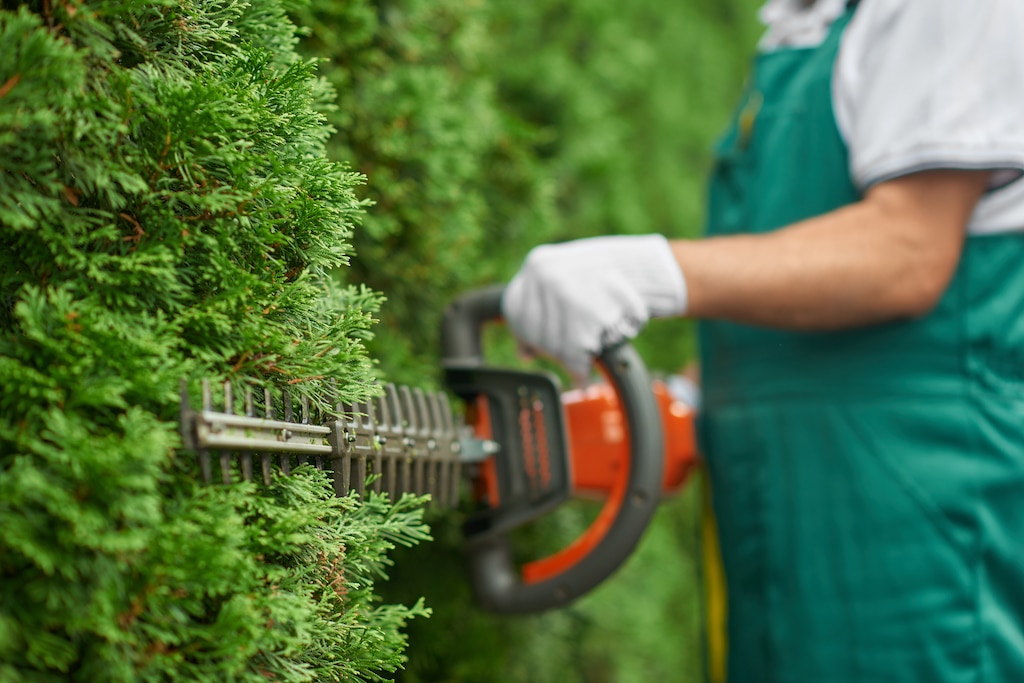Understanding Hedge Types and Their Characteristics
When considering the best way to kill a hedge, it is crucial to understand the type of hedge you are dealing with, as different species have distinct characteristics that may require specific removal methods. Common hedge species include boxwood (Buxus spp.), privet (Ligustrum spp.), and hawthorn (Crataegus spp.). Boxwood hedges, for example, are typically evergreen, dense, and slow-growing, while privet hedges are fast-growing, deciduous plants that can reach significant heights. Hawthorn hedges, on the other hand, are known for their thorny branches and vibrant spring blooms.
Assessing the Size and Density of the Hedge
Before embarking on the journey to eliminate a hedge, it is essential to evaluate its size and density. This assessment will help determine the best approach for removing the hedge and ensure that you have the necessary resources and tools. To measure the hedge’s height, use a tape measure or a long ruler, and record the measurement in feet or meters. The width can be measured using a measuring tape, while the density is determined by observing the number of branches and leaves per linear foot or meter.
For instance, a hedge with a height of 6 feet (1.8 meters), a width of 15 feet (4.5 meters), and a dense canopy may require a more aggressive removal method, such as using power tools or hiring a professional landscaping service. In contrast, a smaller hedge with a height of 3 feet (0.9 meters), a width of 8 feet (2.4 meters), and a less dense canopy might be manageable with manual removal techniques.
Manual Hedge Removal: Tools and Techniques
Manual hedge removal can be an effective and environmentally friendly method for eliminating small hedges or individual hedge plants. This technique typically involves the use of hand pruners, loppers, and hedge shears. Hand pruners are ideal for cutting small branches and twigs, while loppers are more suitable for cutting branches up to 1.5 inches (3.8 centimeters) in diameter. Hedge shears are designed for trimming and shaping hedges but can also be used for removing smaller hedge plants.
Manual removal has several advantages, including lower costs, reduced noise pollution, and the absence of emissions. However, it also has limitations, as it can be labor-intensive and time-consuming, especially for larger hedges. Manual removal is most appropriate for small hedges, isolated hedge plants, or as a follow-up method after using power tools to remove the bulk of a larger hedge.
Employing Power Tools for Efficient Hedge Removal
Power tools can significantly reduce the time and effort required to remove a hedge, especially for larger hedges or those with thicker branches. Common power tools used for hedge removal include electric or gas-powered hedge trimmers and chainsaws. These tools can quickly cut through branches and trunks, making them more efficient than manual removal methods.
When using power tools, it is crucial to follow safety guidelines to prevent accidents and injuries. Always wear protective gear, such as safety glasses, gloves, and sturdy footwear. Ensure that the tools are in good working condition, and keep them sharp to minimize the risk of kickbacks or binding. Additionally, be aware of the limitations of power tools, as they may not be suitable for tight spaces or areas with limited access.
Electric hedge trimmers are relatively lightweight and quiet compared to gas-powered models, making them a good choice for smaller hedges or occasional use. However, they may lack the power needed for larger hedges or thicker branches. Gas-powered hedge trimmers offer more power and mobility but are heavier, noisier, and produce emissions. Chainsaws are highly versatile and can quickly cut through large branches and trunks, but they require more skill and experience to operate safely.
Using Chemical Solutions for Hedge Eradication
Chemical solutions, such as herbicides, can be an effective method for hedge removal, particularly for larger, more established hedges. These products work by disrupting the growth processes of the hedge, ultimately leading to its death. However, it is essential to follow safety guidelines and local regulations when using chemical solutions for hedge removal.
When selecting a herbicide, look for products specifically labeled for hedge removal or broadleaf plant control. Glyphosate-based herbicides are commonly used for this purpose, as they are systemic and can be absorbed by the plant’s leaves and transported to the roots. Always read and follow the manufacturer’s instructions carefully, and wear appropriate protective gear, such as gloves, safety glasses, and long sleeves, when handling and applying herbicides.
To apply herbicides, you can use a hand-pump sprayer, a backpack sprayer, or a paintbrush to apply the product directly to the hedge’s leaves. It is generally best to apply herbicides during the growing season, when the plant is actively growing and can absorb the product most effectively. Be aware that chemical solutions may not provide immediate results and may require multiple applications over several weeks or months to achieve complete hedge removal.
Keep in mind that chemical solutions can have potential environmental impacts, so it is crucial to use them responsibly. Always follow local regulations regarding herbicide use, and avoid applying them near waterways, gardens, or other sensitive areas. If possible, consider using alternative removal methods, such as manual or power tool removal, before turning to chemical solutions.
Hiring a Professional for Hedge Removal
For large or complex hedge removal projects, hiring a professional landscaping or tree removal service can save time, effort, and potentially reduce safety risks. Professional services often have the necessary equipment, experience, and expertise to handle even the most challenging hedge removal tasks efficiently and effectively.
When choosing a professional service, consider the following tips to ensure a successful hedge removal experience:
- Research local companies: Look for reputable landscaping or tree removal services in your area, and read online reviews to gauge the quality of their work.
- Request estimates: Contact several companies to request estimates for the hedge removal project. This will help you compare prices and services, ensuring you get the best value for your money.
- Check credentials and insurance: Verify that the company is licensed, insured, and bonded. This protects you from potential liability in case of accidents or damage to property during the removal process.
- Ask about experience and qualifications: Inquire about the company’s experience in hedge removal, and ask if their team members have any relevant certifications or training.
- Discuss the removal process: Talk to the company about their removal methods, and ensure they will follow best practices for safety, efficiency, and environmental responsibility.
- Understand the timeline and costs: Clarify the expected timeline for the project and the total cost, including any additional fees for disposal or cleanup services.
During the hedge removal process, expect the professional team to take the necessary safety precautions, protect your property from damage, and leave the site clean and free of debris. After the removal, you can focus on maintaining a hedge-free landscape using the tips provided in the previous sections of this guide.
Post-Removal Hedge Disposal and Site Cleanup
After successfully removing a hedge, it is essential to dispose of the removed materials properly and clean up the site to maintain curb appeal and prevent pest infestations. Various disposal methods are available, including composting, recycling, and municipal waste disposal options.
Composting
Composting is an environmentally friendly way to dispose of hedge materials, as it allows the organic matter to break down naturally and enrich the soil. To compost hedge trimmings, create a compost pile in a well-draining, shady area of your yard. Alternate layers of green materials (such as hedge trimmings) and brown materials (such as dried leaves or straw) to promote decomposition. Turn the pile regularly to aerate the contents and speed up the composting process. Ensure that the hedge materials are free from pests and diseases before adding them to the compost pile.
Recycling
In some areas, local waste management facilities or recycling centers may accept hedge trimmings for recycling. Check with your local waste management agency to determine if this option is available in your community. If so, you may need to follow specific guidelines for preparing and transporting the hedge materials to the recycling center.
Municipal Waste Disposal
If composting and recycling are not viable options, you may need to dispose of the hedge materials through your municipal waste disposal service. Check your local waste management agency’s guidelines for disposing of yard waste, as some areas may have restrictions on the types and amounts of vegetative materials that can be placed in regular trash pickups. In some cases, you may need to schedule a special pickup or transport the materials to a designated waste disposal facility.
Regardless of the disposal method you choose, it is crucial to clean up the site after hedge removal to prevent pest infestations and maintain a tidy landscape. Remove all debris, such as leaves, branches, and roots, and dispose of them properly. Inspect the area for any remaining hedge growth, and address it promptly to prevent regrowth. Regularly monitor the site for new hedge growth, and take action as needed to maintain a hedge-free landscape.
Maintaining a Hedge-Free Landscape: Preventive Measures
After successfully removing a hedge, it is essential to take preventive measures to ensure that new hedge growth does not appear and disrupt your landscape. This section will provide tips on maintaining a hedge-free landscape, including planting non-invasive groundcovers, installing barriers, and regularly inspecting the area for new hedge growth.
Planting Non-Invasive Groundcovers
One effective way to prevent new hedge growth is by planting non-invasive groundcovers in the area where the hedge once stood. Groundcovers are low-growing plants that spread horizontally, covering the ground and preventing other plants from growing. Choose groundcovers that are well-suited to your climate and garden conditions, and ensure they are non-invasive to avoid future problems.
Installing Barriers
Installing barriers can help prevent new hedge growth by physically preventing hedge roots from spreading and establishing new plants. Barriers can be made from various materials, such as metal, plastic, or landscape fabric. Place the barriers deep enough in the soil to prevent hedge roots from growing underneath and consider using an additional layer of mulch to further discourage hedge growth.
Regularly Inspecting the Area
Even with preventive measures in place, it is crucial to regularly inspect the area for any signs of new hedge growth. Early detection and removal of new hedge sprouts can save time and effort in the long run, as it prevents the hedge from becoming well-established. Schedule routine inspections of your landscape, and address any new hedge growth promptly.
By following these preventive measures, you can maintain a beautiful, hedge-free landscape and enjoy the fruits of your hedge removal labor. Regular inspections, planting non-invasive groundcovers, and installing barriers are all essential steps in ensuring that your landscape remains hedge-free for years to come.






